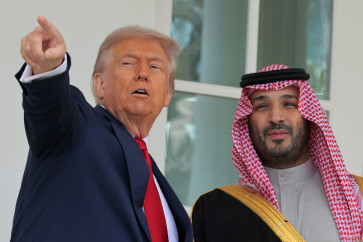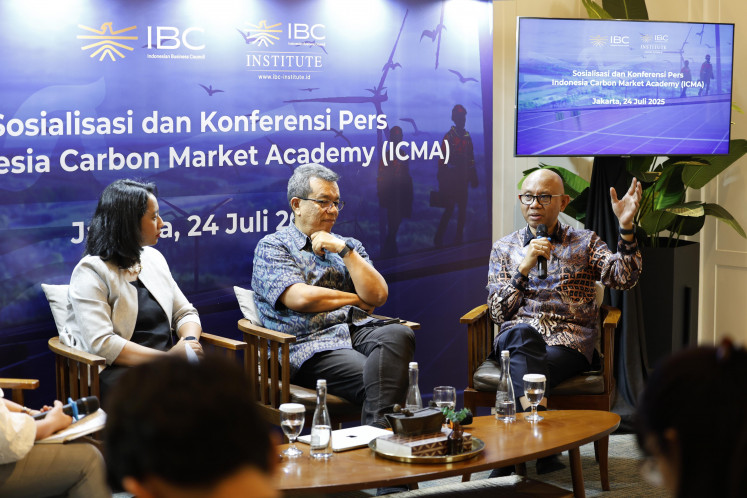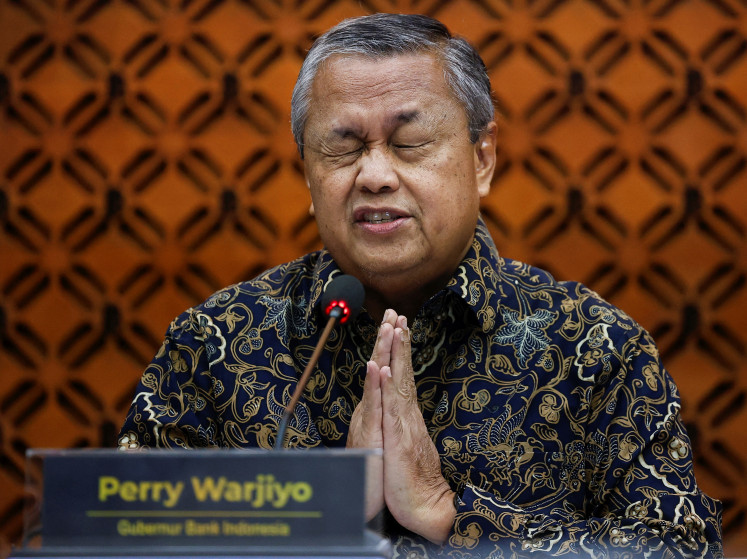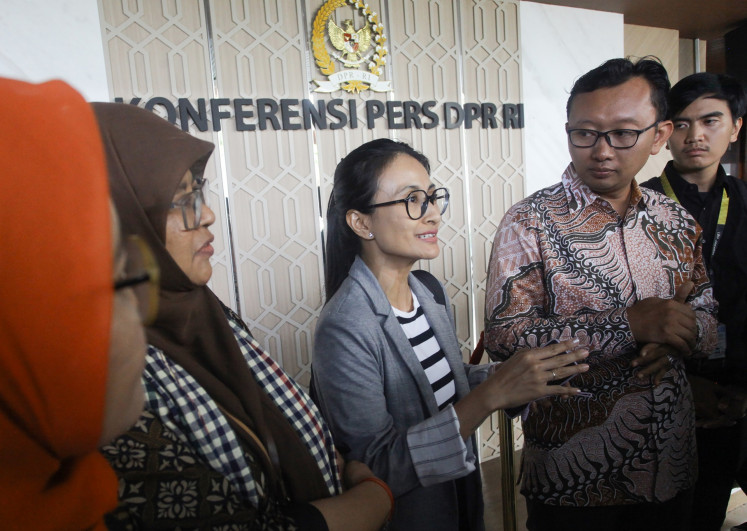Popular Reads
Top Results
Can't find what you're looking for?
View all search resultsPopular Reads
Top Results
Can't find what you're looking for?
View all search resultsRegulation on carbon value: Another season of red tape?
Indonesia, with its potential to generate up to 13.4 billion tonnes of tradable carbon credits by 2050, is not yet the center of the carbon trade.
Change text size
Gift Premium Articles
to Anyone
 The Indonesian Busines Council (IBC) chief operating officer William Sabandar (left ) talks about carbon market on July 24, while Fairatmos founder and chief executive officer Natalia Rialucky Marsudi (left) and the Indonesia Center for Renewable Energy Studies (ICRES) executive director Paul Butarbutar look on in Jakarta. The IBC launched the Indonesian Carbon Market Academy to tap opportunities in carbon trade. (Courtesy of IBC/-)
The Indonesian Busines Council (IBC) chief operating officer William Sabandar (left ) talks about carbon market on July 24, while Fairatmos founder and chief executive officer Natalia Rialucky Marsudi (left) and the Indonesia Center for Renewable Energy Studies (ICRES) executive director Paul Butarbutar look on in Jakarta. The IBC launched the Indonesian Carbon Market Academy to tap opportunities in carbon trade. (Courtesy of IBC/-)
W
hen Bill Gates stated he believes it is unlikely the world will limit global warming to under 2 degrees Celsius, let alone the more ambitious 1.5-degree target set by the Intergovernmental Panel on Climate Change (IPCC), his recent memo “Three Tough Truths About Climate,” the message became clear: the situation is both real and urgent.
He noted that the rise of machine learning will require significantly higher energy demands, with the International Energy Agency estimating up to 945 terawatt-hours (Twh) annually by 2030. To meet the climate target, we need to remove 51 billion tonnes of greenhouse gases from the atmosphere annually to achieve net zero by 2050. Failing to do so could cause five times more deaths than the Spanish flu a century ago.
All possible scenarios point toward a promising solution: Carbon Dioxide Removal (CDR). According to the IPCC, CDR refers to approaches that remove CO2 from the atmosphere and store it durably in geological, terrestrial or ocean reservoirs, or in products. Carbon is therefore not just reduced; it is actively turned into zero.
Among many CDR approaches, Biomass Carbon Removal and Storage (BiCRS), specifically biochar, a carbon-rich black mass converted from agricultural waste through pyrolysis, deserves a focus. Biochar can be processed into biofertilizer, biopesticides and bioenergy, among other uses. Having worked at a biochar startup, I advocate for increased private sector involvement in CDR technologies and the subsequent sale of resulting carbon credits.
Now, everybody is talking about carbon credits. Many ask me: “How do I build this startup so I can sell carbon credits?” As a long-standing student of chemistry and biology, I find it frustrating when conversations focus solely on market entry without a proper scientific lens for technology development and carbon calculation, and without necessary regulatory and capital support from the government.
Let us focus on the second part: carbon credits derived from CDR processes. This is where Presidential Regulation (Perpres) No. 110/2025 on the Implementation of Carbon Economic Value (NEK) Instruments and the Control of National Greenhouse Gas Emissions comes in.
This regulation provides the legal framework for carbon trading, certification and Measurement, Reporting and Verification (MRV). While it mentions the recognition of international standards and mutual recognition agreements, it does not yet specify which international registry or standard it will adopt, nor exactly how double counting will be prevented.


















